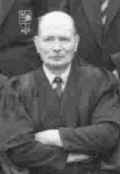 Lee Rawnsley was a very
interesting character who much influenced me. These are just reminiscences and
very subject to the distortions of time.
Lee Rawnsley was a very
interesting character who much influenced me. These are just reminiscences and
very subject to the distortions of time.Mr. L. Rawnsley - Science 1954-60
by Gerry Freed
 Lee Rawnsley was a very
interesting character who much influenced me. These are just reminiscences and
very subject to the distortions of time.
Lee Rawnsley was a very
interesting character who much influenced me. These are just reminiscences and
very subject to the distortions of time.
He used to yarn about his background in his physics lessons and in some very interesting 16mm film shows he gave at the Sixth Form Society.
He was a flying instructor in the RFC in the '14 war. One of his tasks as met officer of the training school was to get up at dawn at fly around in his SE5 to check out the weather for the day. One morning he took off and slipped off the cushion he used to match the fixed seat with the length of his legs and the position of the rudder bar. He lost control at a low altitude, side slipped and crashed. He spent a long time in hospital and claimed that he was the first recipient of stainless steel bone support prostheses, which he still carried. His shoulder and one shattered leg were apparently pinned together with rods and plates. I don't recall what he said about his between wars career. However, with Squadron Leader rank and then retirement at Group Captain he ran a major part of the South of England's balloon defences during the Blitz. That was why at Rememberance Days he turned up in a uniform with genuine rank and medals that outsmarted the CCF officers.
After the war he was involved in the founding, management and teaching of the Turkish Naval College near Istanbul. He didn't tell us but I found out much later that the Allies staffed this as an Intelligence centre for that corner of the Iron Curtain. When he retired he chose to return to England. His plan was to do some part time teaching while living on his yacht on the Grand Union Canal. He came to HCS as a temporary reserve teacher. He showed us film of the boat in Turkey and staff parties aboard. Shortly after he arrived he became notorious in a way I am sure he would not have wanted. He had hired a Turkish crew to bring the boat over, it was a sea going 1920's motor cruiser with a hot bulb diesel engine. They got to Greenwich and moored at the Naval Dockyard. The next morning they intended to navigate the canal entrance. The engine needed a gas cylinder to operate the external burner to get the hot bulb up to temperature. Using sign language, as they had no English, they borrowed a cylinder from the dockyard. It was the wrong gas, Oxygen I believe. The boat blew up killing several people, sank and damaged the dockyard jetty.
After the enquiry I recall that standards were introduced to prevent the cylinders being interchanged on the torch sets, as they are today.
I don't believe he ever got to live on his boat and he was clearly stressed
by the experience. He was too nice and polite for pupils conditioned by the
carrotless stick teaching culture of the school. His classes were very
conversational. However, I learned a lot of physics and he injected a boating
virus which I have only just shaken off. Three years ago in England I built a
radio controlled SE5 model whose registration letters I dedicated to him as he
had also done much to stimulate my interest in aircraft. It was curious that I
found the Air Cadets a very barren environment to learn about flying and kept a
long distance. However he was inspirational and fostered a spirit of adventure
about flight which was way outside their ethos.
return to main staff page
return HOME